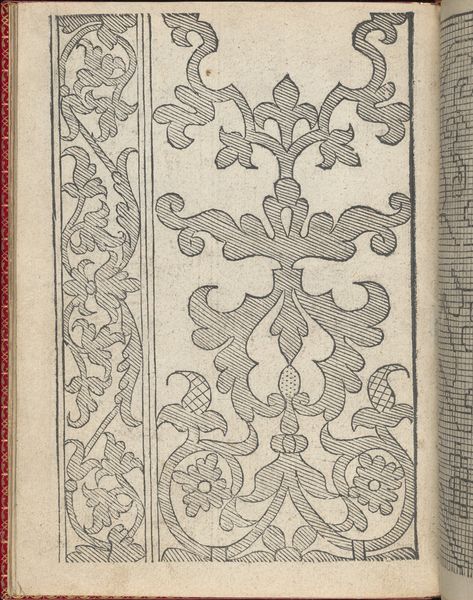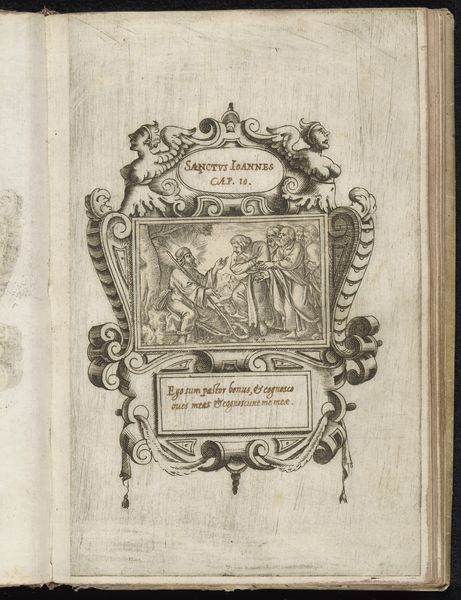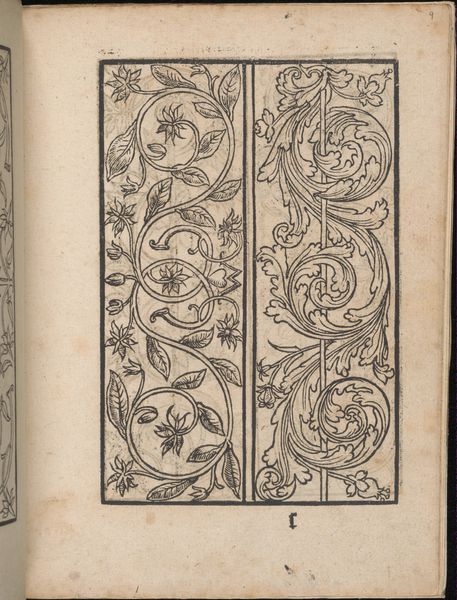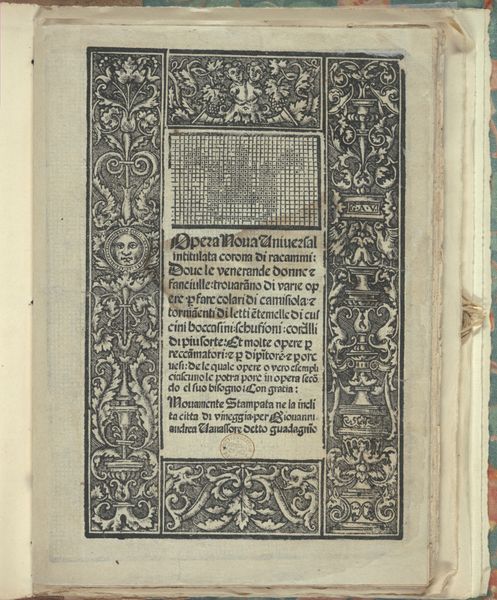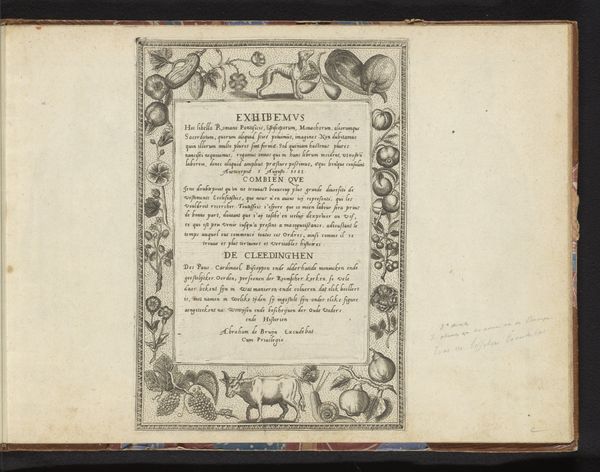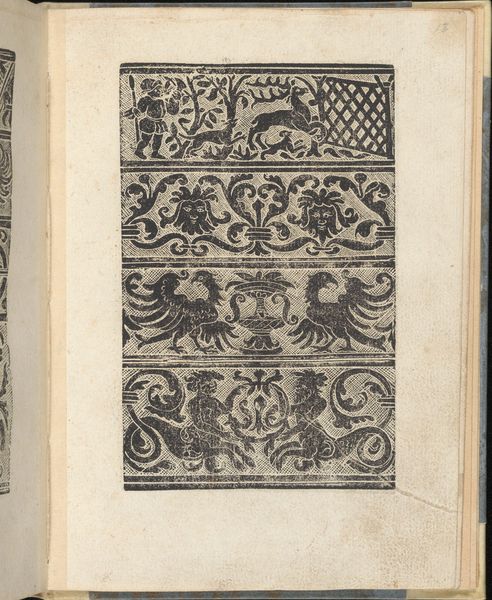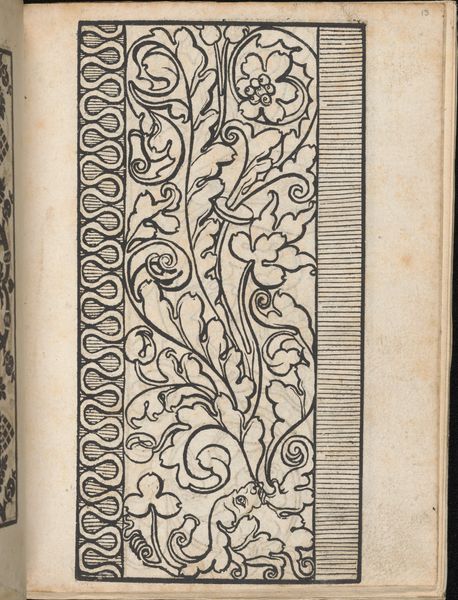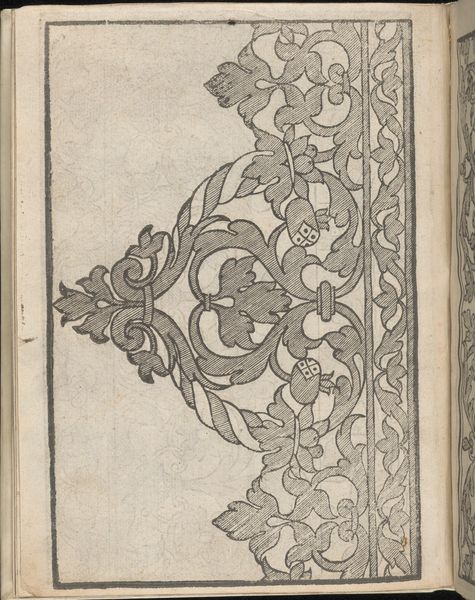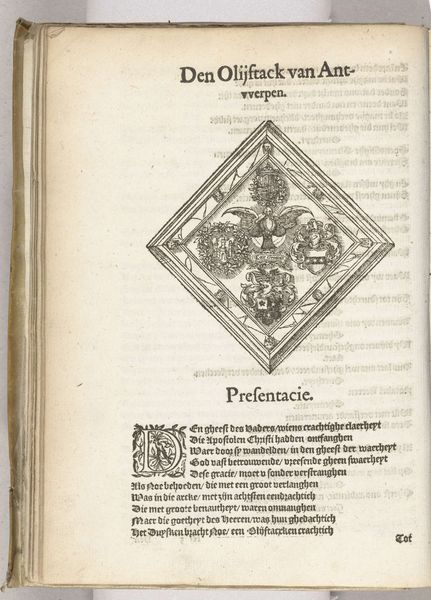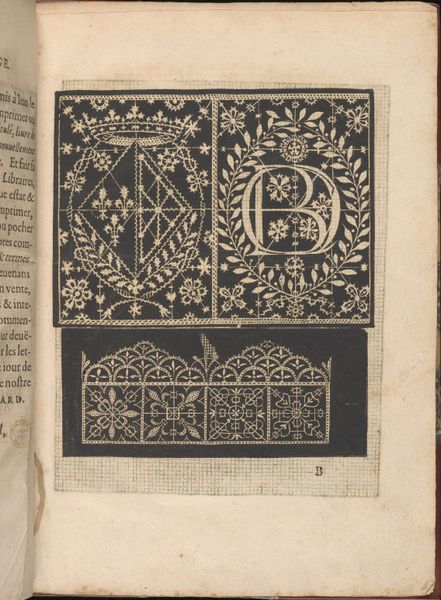
Les Secondes Oeuvres, et Subtiles Inventions De Lingerie du Seigneur Federic de Vinciolo Venitien, page 2 (verso) 1603
0:00
0:00
drawing, print, intaglio, paper, ink, engraving
#
drawing
# print
#
intaglio
#
paper
#
11_renaissance
#
ink
#
geometric
#
line
#
northern-renaissance
#
decorative-art
#
engraving
Dimensions: Overall: 9 7/16 x 6 1/2 in. (24 x 16.5 cm)
Copyright: Public Domain
Curator: This is a page from "Les Secondes Oeuvres, et Subtiles Inventions De Lingerie" by Federico de Vinciolo, printed in 1603. It's an engraving, using ink on paper. Editor: It has a formal, almost austere quality, doesn’t it? The stark contrast of the ink, the precision of the lines... it feels very deliberate, controlled. Curator: Precisely! The composition centers around the strong geometric outline of a square. Note how it is softened by the organic detail of the laurel wreath motif. And the line work, remarkably delicate. The symmetry is carefully considered. Editor: I'm struck by the framing—this printed design appears within the pages of an actual book. It makes me consider who had access to these luxury publications in 17th-century France and how such intricate works might reinforce the era's rigid social hierarchies. It even includes text, evoking ideas of both classicism and class divides! Curator: The text enhances its purpose. This wasn't created as a fine art print but as a template, intended for use. A visual guide for creating intricate lace. Think about the labour required for the piece's implementation. Editor: Yes! We must also consider the invisible laborers often omitted from art historical records – the lacemakers themselves! While Vinciolo, a Venetian designer, receives credit, these works reflect collective artistry influenced by localized aesthetics. And by extension, what does that imply for ideas about authorship? Curator: Certainly, and analyzing it with semiotic tools allows one to view the wreath less as representation and more as an indication of rebirth. Furthermore, consider how this connects with Renaissance Humanism, whose philosophy drove much art and design practice at the time. Editor: But that Renaissance rebirth didn’t extend to everyone. This aesthetic exists because of an underclass performing highly skilled, meticulous work that afforded luxury to others, reflecting very specific early modern social power dynamics. Curator: An incisive interpretation. Analyzing the structures is important. What is clear, however, is Vinciolo's attention to the line—the pure form expressed within a functional piece of work. Editor: Ultimately, even ornamental and decorative works bear traces of complex, interconnected human stories. Examining these materials is important.
Comments
No comments
Be the first to comment and join the conversation on the ultimate creative platform.
